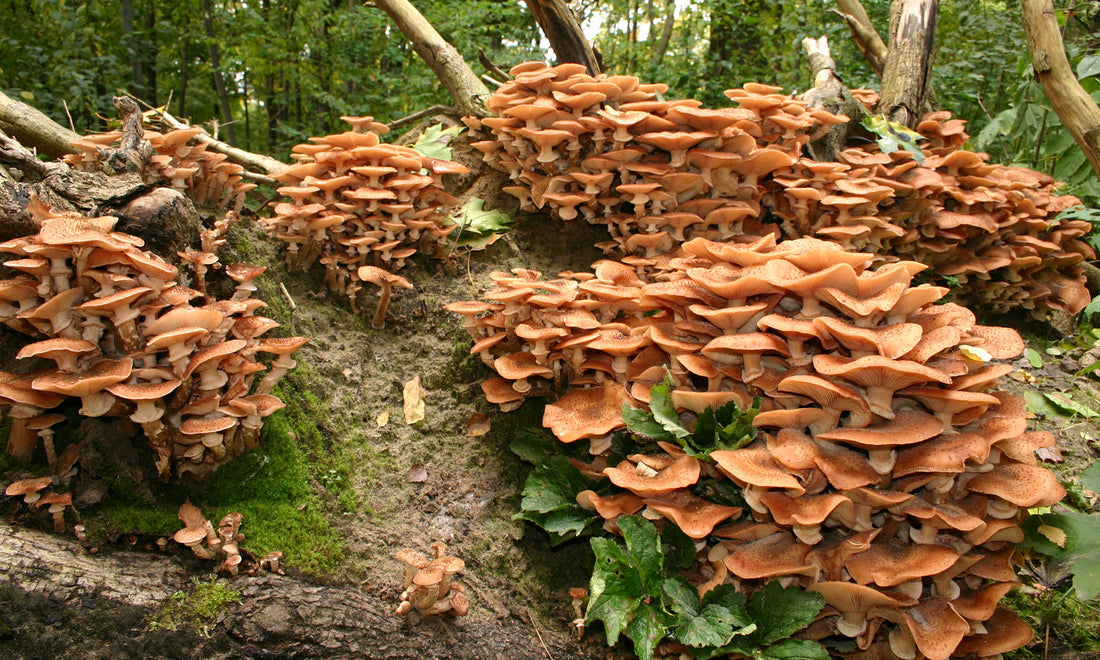
The World's Largest Organism: Unraveling the Secrets of Armillaria Ostoyae
Hidden beneath the forest floor of the Malheur National Forest in eastern Oregon lies a silent, colossal giant. It's not a towering tree or a massive mountain, but rather a massive network of interconnected fungal threads. Armillaria Ostoyae, also known as the honey fungus, is an extraordinary and enigmatic organism that has fascinated scientists and nature enthusiasts alike. In this blog post, we will delve into the remarkable world of Armillaria Ostoyae, exploring its unique characteristics, ecological significance, and the complex relationship it shares with its surroundings.
Meet Armillaria Ostoyae
Armillaria Ostoyae, a species of fungus, is often referred to as the honey fungus due to its reddish-brown to amber-colored caps. But its appearance is only a small part of its story. What truly makes this fungus stand out is its remarkable size. A. Ostoyae is famous for being the largest living organism on Earth in terms of area covered. Its mycelial network can stretch over thousands of acres, forming a massive underground web.
Taxonomy and Identification
A. Ostoyae belongs to the family Physalacriaceae, and it is classified within the genus Armillaria. It's distinguished by its cap, which can vary in size and shape, and a ring (annulus) on the stem. To identify it accurately, one must consider not only its physical characteristics but also its habitat and growth patterns.
Ecological Significance
-
Role in Forest Ecosystems
A. Ostoyae plays a crucial role in forest ecosystems. It's a saprophytic fungus, which means it primarily feeds on decaying organic matter. As the honey fungus colonizes trees and woody debris, it helps recycle nutrients and break down organic material, playing a vital role in nutrient cycling.
-
Mutualistic Relationships
In addition to its saprophytic tendencies, A. Ostoyae forms mycorrhizal associations with many tree species. Mycorrhizal fungi establish a mutually beneficial relationship with their host plants. In this partnership, the fungus enhances the plant's ability to absorb nutrients, particularly phosphorus and nitrogen, while receiving carbohydrates from the tree in return. This symbiosis contributes to healthier and more resilient forests.
Life Cycle and Growth
Understanding the life cycle of A. Ostoyae is crucial to appreciate its ecological significance.
-
Spore Dispersal
The life of A. Ostoyae begins with the release of spores from mature mushrooms. These spores are spread by wind, rain, or other environmental factors, contributing to the formation of new colonies.
-
Mycelial Growth
The spores germinate, giving rise to a network of mycelium, the fungus's vegetative body. This mycelial network spreads underground, exploring its environment and colonizing suitable hosts.
-
Tree Colonization
When conditions are favorable, A. Ostoyae can infect and eventually kill living trees. This process, known as root rot, occurs when the mycelium penetrates the tree's roots, causing decay and decline.
-
Vegetative Spread
One of the most astonishing aspects of A. Ostoyae is its vegetative spread. The mycelium grows horizontally, often at a rate of several feet per year. Over time, this leads to the formation of the vast underground colonies for which the honey fungus is famous.
The Infamous "Humongous Fungus"
A. Ostoyae's fame skyrocketed in the late 20th century when it earned the title of "humongous fungus." The most renowned individual of this species, residing in eastern Oregon, spans over 2,385 acres (3.7 square miles) and is estimated to be thousands of years old. It's considered one of the world's oldest and heaviest living organisms.
Challenges and Conservation
While Armillaria Ostoyae is a marvel of nature, it can also pose challenges for forest management. When it infects economically valuable tree species like conifers, it can lead to significant economic losses. Balancing the conservation of these giant fungal organisms with the needs of the forest industry is an ongoing challenge.
Conclusion
Armillaria Ostoyae, the honey fungus, is not just a massive underground organism; it's a symbol of nature's interconnectedness and resilience. Its role in forest ecosystems, mycorrhizal partnerships with trees, and its astonishing vegetative spread make it a fascinating subject of study for ecologists and mycologists worldwide. As we continue to unlock the secrets of this enigmatic organism, we gain a deeper understanding of the intricate web of life that thrives beneath our feet in the world's forests. In doing so, we also learn to appreciate the delicate balance of nature and the profound importance of preserving these remarkable ecosystems.
